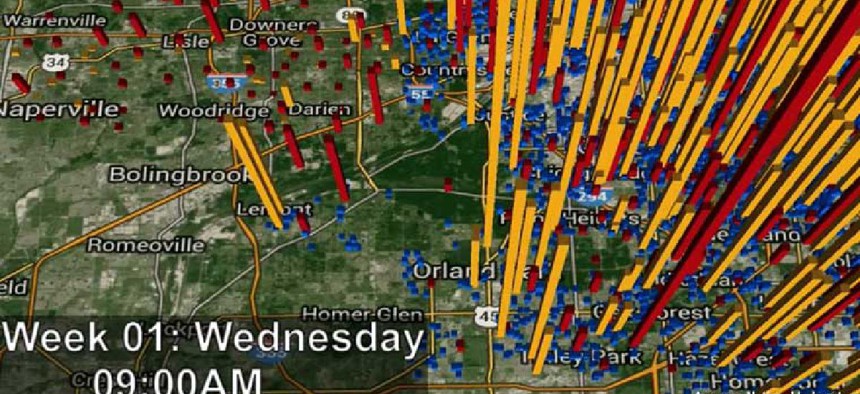Super-powered SIM models COVID spread through Chicago


Connecting state and local government leaders
Researchers at Argonne National Laboratory are using the Theta supercomputer to simulate the spread of COVID-19 throughout Chicago so researchers can learn how the virus spreads.
Argonne National Laboratory has reserved over 250 nodes on its Theta supercomputer to simulate the spread of COVID-19 throughout Chicago so researchers can learn how the virus spreads through urban populations.
The city-scale simulations are populated with just under 3 million agents representing individuals as they navigate some 1.2 million sites -- including homes, schools, workplaces -- where they can become infected or spread the virus. Following exposure, some agents, depending on their profile, can become severely infected and perish while others spread the virus without becoming ill. In the CityCOVID model, the likelihood that a susceptible agent becomes infected is based on the amount of time that two agents spend together.
“With this model, you have potentially many people interacting in many different ways: some might be infected, some might be susceptible, and they mix in different proportions in a variety of different locations,” Argonne computational scientist Jonathan Ozik said. “The multitude of possibilities the model presents make it quite qualitatively different from -- and quantitatively more complex than -- a statistical model or more simplified compartmental models, which are much faster to run.”
The computational demands of the project stem from the models’ randomly selected components, which govern the underlying uncertainties and parameters of the simulation, Argonne officials said. These variables include agent behaviors, disease progression dynamics and transmissibility.
With optimization assistance from the staff at the Argonne Leadership Computing Facility, the simulations have used more than 800 nodes at once on Theta, a 11.69-petaflop Intel/Cray system --. Post-processing is completed on Bebop, a high-performance computing cluster operated by Argonne’s Laboratory Computing Resource Center that the team also leverages for simulation runs.
The models -- running for a simulated year -- are revised every day with the latest information.
“This is the most detailed granular simulation of COVID-19 that exists right now in terms of modeling individuals who could be in various disease states, including infectious or hospitalized,” Argonne Distinguished Fellow Charles Macal said.
The models will help researchers understand different outcomes resulting from various social distancing measures for however many additional days or weeks.
“What are good ways to ease off the social distancing measures?” Ozik asked. “Everybody’s interested in that for very obvious reasons, but we don’t want to do something that will just create another calamity a few months down the road.”
“It’s the big picture that we’re trying to capture with these simulations,” Macal said. “How can we innovate and contribute by generating information unavailable anywhere else? We want to have an impact on the decisions that are being made about social distancing and opening society back up.”




